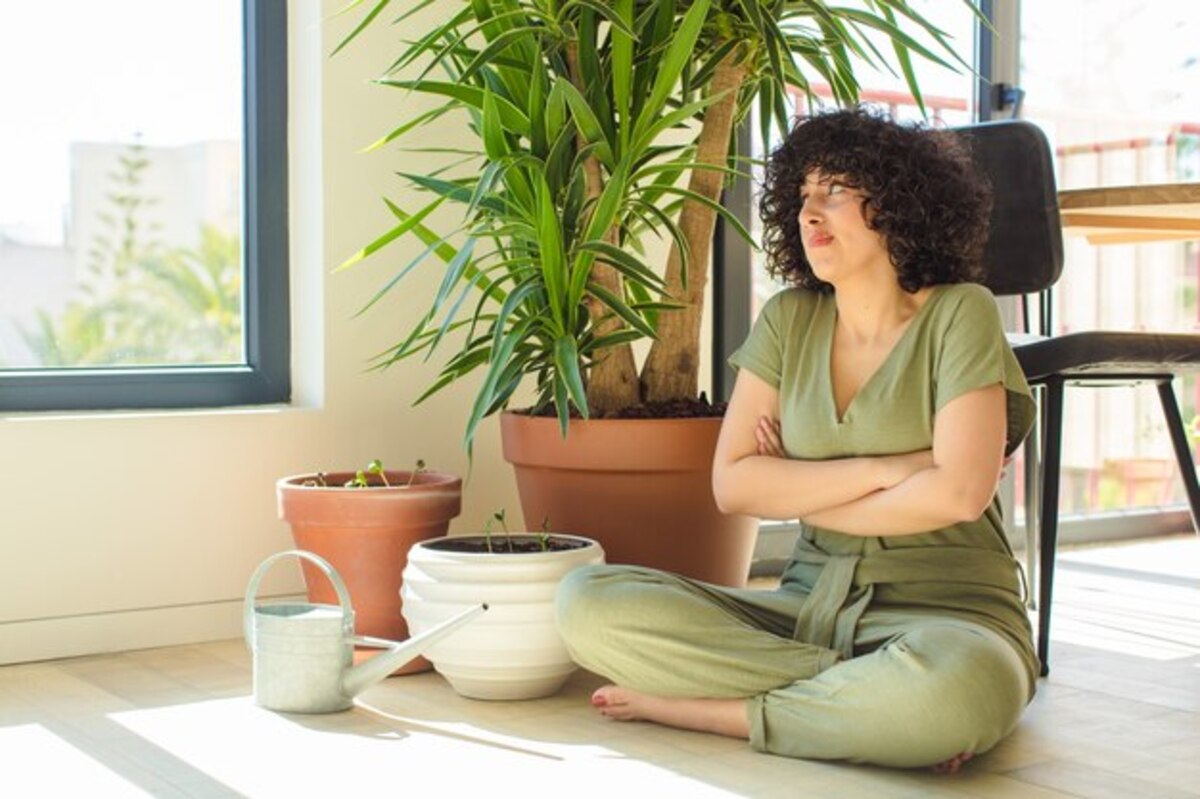Transform your home with a financial approach focused on well-being.

Transforming your home not only involves physical renovations but also a financial approach focused on well-being. In this article, you will discover how to optimize housing costs without sacrificing your quality of life. You will learn to make smart decisions that not only benefit your economy but also enhance your environment and personal happiness. It's time to invest in a home that reflects your values and needs!
The importance of financial well-being at home
The importance of financial well-being at home lies in its ability to influence all aspects of family life. A solid economic environment allows families to focus on what truly matters: health, happiness, and personal development. When financial resources are managed properly, welcoming and functional spaces can be created that reflect the personality and values of each household member. Furthermore, having good financial planning helps reduce stress related to debts and unexpected expenses, contributing to a more harmonious environment.
Financial well-being is not only about saving money but also about making smart investments that enhance both the physical space and quality of life. For example, opting for energy-efficient upgrades in the home can lead to significant long-term savings while also contributing to environmental protection. These informed financial decisions benefit not only the family economy but also foster a sense of security and emotional stability. By cultivating a focus on financial well-being, a solid foundation is established upon which to build a prosperous and happy home.
2. Strategies to reduce housing costs without compromising quality
To reduce housing costs without compromising quality, it is essential to adopt a strategic approach that maximizes available resources. One of the best practices is to conduct an audit of monthly household expenses. This includes everything from utilities to maintenance and decoration. By identifying areas where savings can be made, such as opting for cheaper energy providers or making changes to lighting to use LED bulbs, expenses can be significantly reduced without affecting the comfort and aesthetics of the home. Additionally, investing in sustainable solutions, such as rainwater harvesting systems or solar panels, will not only decrease bills in the long run but also contribute to a healthier environment.
Another effective strategy is to prioritize home improvement projects that offer a high return on investment (ROI). For example, renovations in the kitchen or bathroom are often more valued and can significantly increase the property value. It is advisable to research materials and finishes that are durable yet affordable; many times there are alternatives that offer a similar appearance at much lower prices. Additionally, fostering a "do it yourself" (DIY) culture can be an excellent way to save money on labor while unleashing creativity. These actions will not only help maintain high quality standards but also create a home that reflects your personal style without straining your budget.
3. How to create an effective family budget for well-being
Creating an effective family budget is essential for ensuring financial and emotional well-being at home. To start, it is vital to have a clear view of monthly income and expenses. This includes not only fixed costs like the mortgage or rent but also variable expenses such as food, transportation, and recreational activities. By categorizing your expenses, you can identify areas where reductions can be made and allocate more resources to what truly matters: those experiences and products that promote family happiness and well-being. Once you have this information, set realistic limits for each category and make sure to review your budget regularly to adjust it as necessary.
In addition to creating the budget, it is important to foster a financial culture at home that involves all family members. This means openly discussing money, sharing common financial goals, and celebrating achievements together. Involving everyone in this process not only helps to raise awareness about responsible spending but also promotes a sense of shared responsibility towards the household's economic well-being. Additionally, consider allocating part of the budget to savings or emergency funds; this not only provides financial security but also reduces stress related to unexpected expenses, allowing for a more fulfilling enjoyment of the family environment.
4. Smart investments to enhance your living space
Smart investors seek to maximize their return on investment, and this also applies to the home. When considering improvements to your living space, it is crucial to focus on those that not only beautify but also add long-term value. For example, making an energy upgrade by installing efficient heating and cooling systems can significantly reduce your monthly bills and increase your home's appeal in the market. Additionally, small renovations like painting the walls or updating appliances can give a fresh look without requiring large financial outlays.
Another area where you can make smart investments is in sustainability. Incorporating eco-friendly elements, such as solar panels or rainwater harvesting systems, not only contributes to planetary well-being but can also provide you with significant savings over time. As your home becomes a more efficient and self-sufficient space, you will experience an improvement in your daily quality of life. Ultimately, focusing on conscious investments will allow you to create an environment that reflects your personal values while taking care of your finances.
5. Sustainable energy: saving money and taking care of the planet
Sustainable energy has become a priority for both households and the planet. By investing in renewable energy sources, such as solar panels or geothermal heating systems, you are not only reducing your carbon footprint, but you may also experience significant savings on your utility bills. These investments may seem costly at first, but over time, the accumulated savings and possible government grants or incentives can make them worthwhile. Additionally, an energy-efficient home can increase its market value, turning this transformation into a smart financial decision.
Adopting sustainable practices also includes simple and accessible changes that we can all implement. From using LED bulbs to installing smart thermostats, these small actions not only improve the energy efficiency of the home but also encourage a more mindful and responsible lifestyle. By choosing energy-efficient appliances and reducing unnecessary consumption of electricity and water, you contribute to the health of the planet while taking care of your family budget. Ultimately, by adopting a sustainable approach in your home, you are creating a space that reflects your personal values and promotes a brighter future for the next generations.
6. The relationship between housing costs and mental health
The relationship between housing expenses and mental health is a fundamental aspect that is often overlooked on the path to a more balanced and satisfying home. High housing costs can create significant financial pressure, which in turn can contribute to stress, anxiety, and other mental health issues. By reducing unnecessary expenses related to your home, such as utilities, maintenance, or excessive rent, you can free up resources that not only improve your economic stability but also allow you to dedicate time and energy to activities that promote emotional and physical well-being.
Additionally, a well-managed and welcoming environment has a direct impact on our mental health. Investing in pleasant and functional spaces not only improves daily quality of life but also promotes a sense of belonging and personal satisfaction. Creating a home where you feel safe and comfortable can serve as a refuge from external stresses. Therefore, by adopting a financial perspective focused on well-being, you not only optimize your housing expenses but also lay the groundwork for a more balanced and fulfilling life from the inside out.
7. Accessible financing options to improve your home
Affordable financing options are essential for carrying out the transformation of your home without compromising your economic stability. There are various alternatives, from personal loans to specific lines of credit for renovations. These financial instruments allow you to spread the costs over time, making it easier to plan your expenses and avoiding the pressure of immediate outlays. Additionally, many institutions offer competitive interest rates and flexible conditions that can adapt to your particular financial situation, helping you achieve your goals without stress.
Another option to consider is the grants and government programs that promote home improvement. Many localities have initiatives aimed at supporting homeowners in their efforts to modernize their homes or make them more energy-efficient. Researching these resources can open doors to access funds that you may not necessarily have to repay, which is an invaluable opportunity for those looking to make significant improvements without taking on an excessive financial burden. By exploring these opportunities, you can transform your living space while maintaining a healthy and well-being-focused financial approach.
8. The impact of interior design on your personal finances
The interior design of your home has a significant impact on your personal finances, as aesthetic and functional decisions can influence the property's value and maintenance costs. By choosing an appropriate color palette, multifunctional furniture, or smart storage solutions, you not only enhance the aesthetics of the space but also optimize its functionality. This can translate into an increase in your home's resale value and long-term savings by reducing the need for costly renovations. A well-designed home can be an investment that yields both emotional and economic returns.
Additionally, interior design directly affects your habits and lifestyle. An organized and welcoming environment can foster productivity and emotional well-being, which translates into better financial decisions. When you feel comfortable in your home, you are less likely to seek escape through unnecessary spending or impulsive purchases. Investing time and resources in creating an environment that reflects your values not only improves your quality of life but also helps you maintain a healthier approach to your personal finances. Ultimately, interior design is a powerful tool for building not just a beautiful home but also a financially sustainable one.
9. Tips to maximize the resale value of your property
Maximizing the resale value of your property is a key strategy to ensure that your investment not only provides you with well-being but also a significant long-term return. To achieve this, it is essential to make improvements that are attractive to future buyers. Focus on renovations that offer a high return on investment, such as updating the kitchen or bathrooms, as these areas are the most valued by potential tenants or homeowners. Additionally, maintaining the home's aesthetics and opting for neutral colors in the paint can make your property look more spacious and welcoming, increasing its overall appeal.
Another crucial aspect to maximize resale value is improving the energy efficiency of your home. Investing in energy-efficient appliances, double-glazed windows, and efficient heating and cooling systems not only reduces your monthly costs but also increases the property's appeal to environmentally conscious buyers. Also, remember to maintain the exterior: a well-kept garden and an attractive facade can make a significant difference in first impressions. With each improvement you make, consider how it will benefit both your current quality of life and the future resale value of your home.
10. Setting priorities: which improvements are truly worth it
Establishing priorities in home improvements is essential to ensure that each investment translates into a true benefit. Before embarking on any project, assess which areas of your home have the greatest impact on your well-being and quality of life. For example, energy efficiency may be a priority if you are looking to reduce costs in the long term and improve your comfort. Investing in insulation, double-glazed windows, or efficient heating and cooling systems will not only decrease your bills but also create a more pleasant and healthy environment for you and your family.
Additionally, consider the functionality and aesthetics of the spaces. Sometimes, a simple reconfiguration of the furniture or a fresh coat of paint can completely transform the atmosphere without the need for large expenses. Prioritize those improvements that provide you with immediate emotional satisfaction, such as creating a cozy reading nook or an outdoor space where you can relax. Remember that decisions should align with your personal values; investing in elements that promote mental and physical well-being can yield a much more significant return than any superficial renovation. The key is to find that balance between the practical and the pleasurable to truly enjoy the home you want to build.



